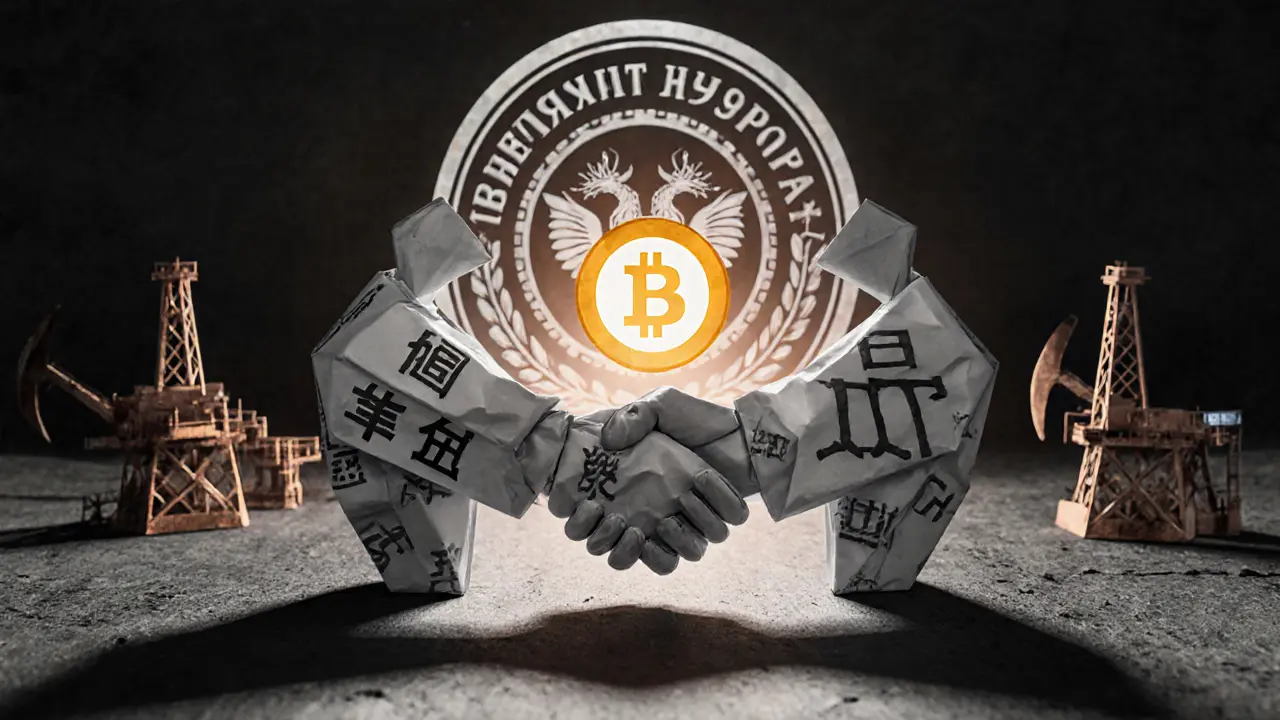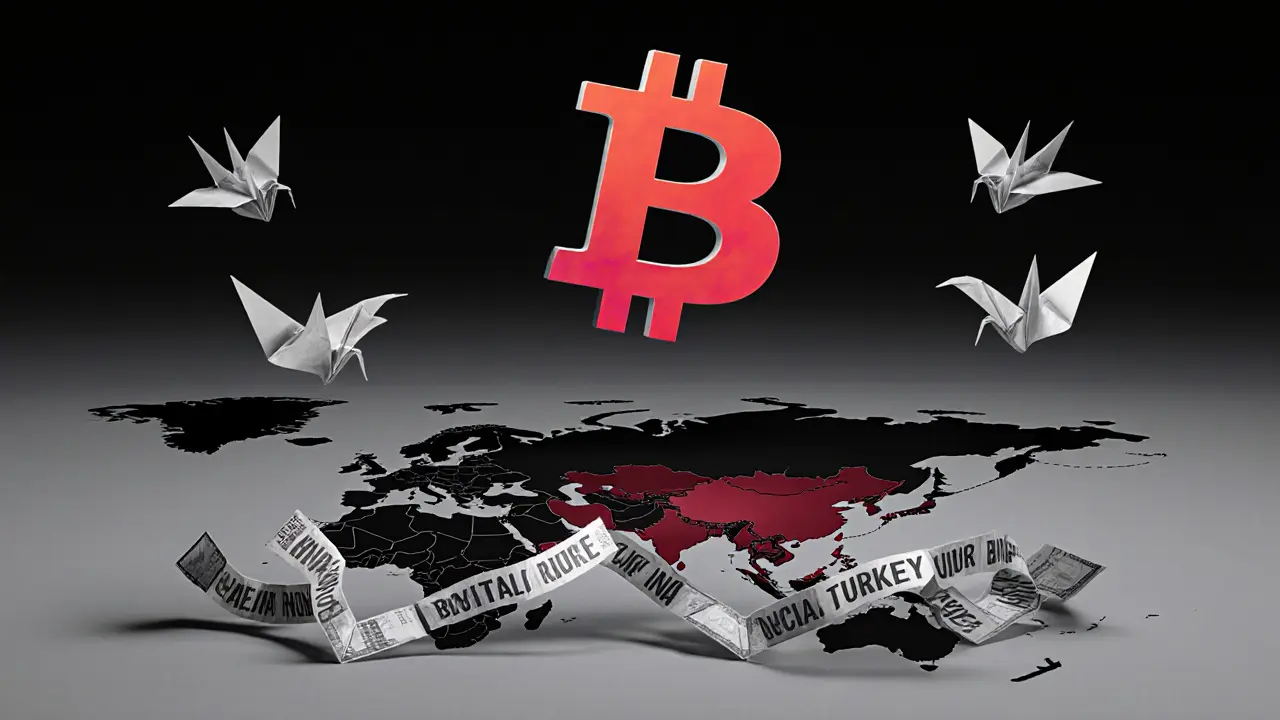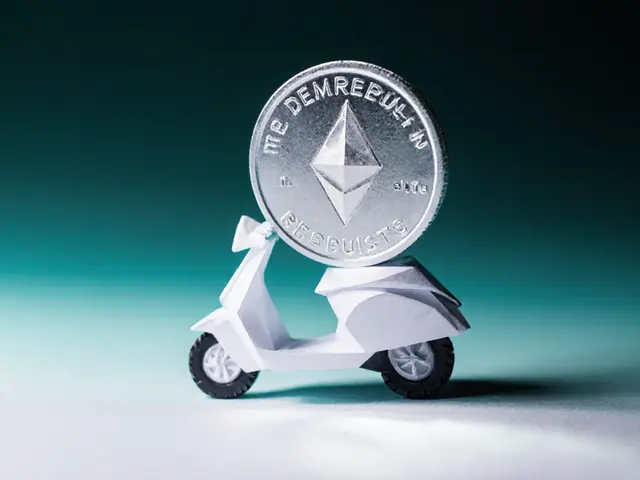Crypto Eligibility Calculator
Check Your Eligibility for Crypto Investments
Russia's new regulations allow only "highly qualified investors" to trade crypto derivatives. Find out if you qualify based on the requirements:
- Over 100 million rubles ($1.1M USD) in assets
- Over 50 million rubles ($550K USD) annual income
- Only crypto derivatives (like futures) available - not direct Bitcoin
Note: This tool calculates eligibility based on the current ruble-to-USD exchange rate (1 USD = 90.91 RUB).
Enter your income or assets to check eligibility.
For years, Russia told its citizens: Bitcoin is illegal. No trading. No payments. No holding. But in 2024, everything changed - not for regular people, but for big companies. The government didn’t legalize crypto for shoppers or freelancers. It legalized it for trade. Specifically, cross-border trade. And it’s using Bitcoin, Ethereum, and stablecoins to bypass Western sanctions. This isn’t a flip-flop. It’s a calculated move.
Why Russia Changed Its Mind on Crypto
In 2022, after sanctions hit Russian banks, the country’s ability to pay for oil, gas, and metals overseas started to collapse. Traditional banking channels - SWIFT, dollar clearing, euro payments - were cut off. Russia needed a way to sell its resources to China, India, Turkey, and others without relying on the U.S. or EU financial systems. That’s when crypto became a tool, not a threat. The breakthrough came with Federal Law No. 221-FZ, passed in September 2024. It didn’t make Bitcoin legal for everyday use. It created a narrow, controlled pilot program. Only licensed companies can use crypto for international payments. And they must do it through government-approved platforms monitored by the Bank of Russia. This isn’t freedom. It’s a leash.What’s Allowed - and What’s Still Banned
The rules are simple but strict:- Allowed: Cross-border payments in Bitcoin (BTC), Ethereum (ETH), Tether (USDT), and other approved digital assets - but only between registered legal entities.
- Banned: Any crypto payments inside Russia. You can’t pay your rent, buy groceries, or invoice a local supplier with Bitcoin.
- Restricted: Individual investors can only buy crypto if they’re classified as “highly qualified.” That means having over 100 million rubles ($1.1 million USD) in assets or earning more than 50 million rubles ($550,000 USD) a year.
Who’s Actually Using Crypto for Trade?
The biggest users? Energy companies. By early 2025, Russian oil and gas exporters were already invoicing buyers in China and India in USDT and BTC. Why? Because they can. The payments go directly from Russian company wallets to foreign buyer wallets. No intermediary bank. No currency conversion delays. No sanctions blocks. One example is the A7 Group, a firm linked to a sanctioned Russian bank. They’re using ruble-backed stablecoins to settle deals with partners in Central Asia. No SWIFT. No dollar clearing. Just blockchain transactions verified by Russia’s own digital asset platform operators. The numbers speak for themselves. In 2025, Russia’s crypto-facilitated international trade hit 1 trillion rubles - roughly $11 billion USD. That’s not a drop in the ocean. It’s a new pipeline.
How the System Actually Works
It’s not as simple as sending Bitcoin from one wallet to another. There’s a full compliance layer built in. Every transaction must:- Go through a certified digital asset platform operator approved by the Bank of Russia
- Include full origin-of-funds documentation
- Be reported to tax and financial authorities
- Pass enhanced AML checks for suspicious activity
The Digital Ruble Is the Real Endgame
While Bitcoin is being used for trade, Russia is quietly building its own digital currency: the Digital Ruble. Launched in August 2023, the Digital Ruble pilot already has over 100,000 transactions processed through 2,500 wallets. Twelve major banks are involved. The goal? Replace cash and card payments entirely - but only within Russia. By September 1, 2026, large enterprises will be required to accept the Digital Ruble. By 2028, every merchant in Russia must support it. This isn’t about crypto. It’s about sovereignty. The Digital Ruble gives the state total control over money movement inside the country - while Bitcoin is used to move money out. Think of it like this: Bitcoin is Russia’s offshore account. The Digital Ruble is its domestic checking account.Who Can Invest in Crypto Now?
Regular Russians still can’t buy Bitcoin through local banks. But in May 2025, the Bank of Russia opened the door for “highly qualified” investors to buy crypto derivatives - like Bitcoin futures. In the first month, Russian investors bought $16 million worth of crypto-based financial products. That’s a small number compared to global markets, but it’s a sign of things to come. The government is testing the waters. In 2026, investment funds will be allowed to buy crypto derivatives too - but only if they meet the same strict investor criteria. The Ministry of Finance is already considering lowering the income threshold for “highly qualified” status. It’s not about democratizing crypto. It’s about gradually expanding control.
The Tension Inside the Government
Not everyone in Russia agrees on this path. The Bank of Russia still warns that crypto is a danger to financial stability. In March 2025, they pushed for criminal penalties for anyone using crypto outside the pilot program. They see it as a loophole that could spiral out of control. Meanwhile, Deputy Finance Minister Ivan Chebeskov argues for a full national digital asset strategy - one that could turn crypto into a driver of economic growth, not just a sanctions workaround. This isn’t a unified policy. It’s a compromise. Putin ordered the Finance Ministry and Central Bank to find a middle ground. They did. But the middle ground is narrow, tightly controlled, and designed for state interests - not individual freedom.What’s Next?
The pilot program runs for three years. By 2027, the government will decide whether to make these rules permanent. If it works - meaning trade flows keep growing, sanctions stay effective, and no major money laundering scandals emerge - expect broader access. Maybe more cryptocurrencies added to the approved list. Maybe even small businesses allowed to use crypto for exports. But don’t expect domestic crypto payments. That door is slammed shut. The state wants control over money inside Russia. It just needs freedom to move money outside. The world’s watching. China is using crypto for trade too. Iran and Venezuela have tried it. But Russia is the first major economy to build a legal, state-supervised system around it. This isn’t just about Bitcoin. It’s about redefining how nations use money when the old systems turn against them.What This Means for You
If you’re a business in Russia: You can use crypto for international payments - but only if you’re big enough, registered, and willing to jump through regulatory hoops. The paperwork is heavy. The oversight is constant. But the payoff? Access to markets that used to be locked. If you’re a regular person: Don’t expect to pay for coffee with Bitcoin anytime soon. Your options are still limited to foreign exchanges, and you’re doing it at your own risk. The government isn’t protecting you. It’s ignoring you. If you’re outside Russia: Understand that Russian trade is shifting. If you’re buying oil, gas, or metals from Russia, you might be getting an invoice in USDT. That’s not a glitch. It’s the new normal. The rules are clear: Crypto is a weapon for the state. Not a currency for the people.Is Bitcoin legal in Russia for personal use?
No. Personal use of Bitcoin or any cryptocurrency for payments, purchases, or transfers inside Russia is still illegal. The only legal crypto activity is cross-border trade by registered companies under the Federal Law No. 221-FZ pilot program. Individuals can hold crypto, but only through foreign platforms, and they risk losing funds if the government tightens enforcement.
Can Russian companies use Bitcoin to pay suppliers abroad?
Yes - but only if they’re part of the government-approved pilot program. Companies must use certified digital asset platform operators, provide full origin-of-funds documentation, and pass AML checks. The Bank of Russia monitors all transactions. This is not a free-for-all. It’s a tightly controlled channel for trade with sanctioned countries like China and India.
Why is Russia allowing crypto only for cross-border payments?
Because Russia needs to sell its resources - oil, gas, metals - without relying on Western banking systems. Sanctions blocked traditional payment channels. Crypto provides a way to receive payments directly from buyers in non-sanctioning countries. At the same time, the government wants to keep control over money inside Russia, which is why domestic crypto use remains banned.
Can ordinary Russians invest in Bitcoin now?
Only if they qualify as a “highly qualified investor.” That means having over 100 million rubles ($1.1 million USD) in assets or earning more than 50 million rubles ($550,000 USD) annually. Even then, they can only buy crypto derivatives like futures - not direct Bitcoin. Retail access is still blocked. The government is slowly testing the waters, but mass adoption isn’t coming anytime soon.
What happens after the pilot program ends in 2027?
The government will decide whether to make the cross-border crypto rules permanent. If the pilot succeeds - meaning trade volumes grow, no major fraud occurs, and sanctions evasion works - expect expanded access. More cryptocurrencies may be added. Possibly small businesses could join. But domestic crypto use will likely remain banned. The goal isn’t financial freedom. It’s economic resilience under sanctions.
How does the Digital Ruble differ from Bitcoin in Russia?
The Digital Ruble is Russia’s own central bank digital currency - fully controlled by the state and meant for domestic use. Bitcoin is used only for international trade under strict oversight. The Digital Ruble gives the government total visibility into every ruble spent inside Russia. Bitcoin lets Russian companies bypass Western financial systems. They serve opposite purposes: control at home, freedom abroad.





Peter Rossiter
Russia's playing 4D chess with crypto
Not about freedom, it's about survival. Sanctions hit hard, so they built a backdoor using blockchain. Smart. Not ideal, but effective.
Mike Gransky
This is exactly what happens when nations are forced to innovate under pressure. The state isn't embracing crypto-it's weaponizing it. And honestly, it's working.
Ella Davies
The Digital Ruble is the real story here. Bitcoin is just the escape valve. Inside Russia, the state wants total control. Outside, it wants liquidity. Two systems, one goal: sovereignty.
Derayne Stegall
This is 🔥🔥🔥 Russia didn't flip on crypto-they outmaneuvered the West. Using USDT to pay for oil? Genius. No banks. No sanctions. Just blockchain. The future is here, and it's decentralized but state-run.